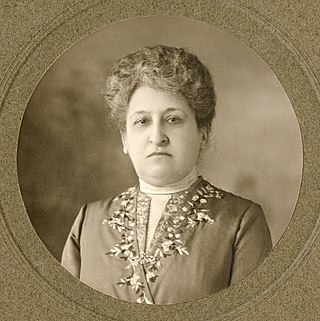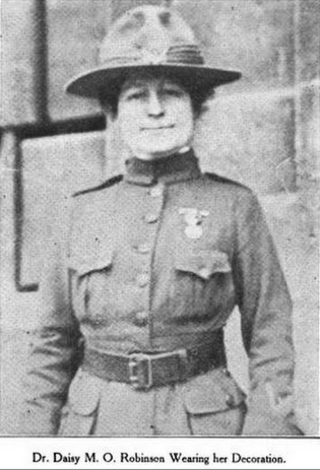
Antonia Coello Novello is a Puerto Rican physician and public health administrator. She was a vice admiral in the Public Health Service Commissioned Corps and served as 14th Surgeon General of the United States from 1990 to 1993. Novello was the first woman and first Hispanic to serve as Surgeon General. Novello also served as Commissioner of Health for the State of New York from 1999 to 2006. Novello has received numerous awards including more than fifty honorary degrees, was elected to the National Academy of Medicine in 2000, and has been inducted into the National Women's Hall of Fame. Her memoir, Duty Calls: Lessons Learned from an Unexpected Life of Service, was published in 2024.

Virginia Apgar was an American physician, obstetrical anesthesiologist and medical researcher, best known as the inventor of the Apgar score, a way to quickly assess the health of a newborn child immediately after birth in order to combat infant mortality. In 1952, she developed the 10-point Apgar score to assist physicians and nurses in assessing the status of newborns. Given at one minute and five minutes after birth, the Apgar test measures a child's breathing, skin color, reflexes, motion, and heart rate. A friend said, "She probably did more than any other physician to bring the problem of birth defects out of back rooms." She was a leader in the fields of anesthesiology and teratology, and introduced obstetrical considerations to the established field of neonatology.

Aletta Henriëtte Jacobs was a Dutch physician and women's suffrage activist. As the first woman officially to attend a Dutch university, she became one of the first female physicians in the Netherlands. In 1882, she founded the world's first birth control clinic and was a leader in both the Dutch and international women's movements. She led campaigns aimed at deregulating prostitution, improving women's working conditions, promoting peace and calling for women's right to vote.

Lena Kellogg Sadler was an American physician, surgeon, and obstetrician who was a leader in women's health issues.

Vera Scantlebury Brown OBE MBBS MD was an Australian medical practitioner and pediatrician in Victoria, Australia.

Dame Janet Mary Campbell, DBE, JP was a British physician and medical officer. Active in refugee relief, Campbell assisted orphaned Basque children following the fascist bombings of the Basque region of Spain, particularly Guernica, during the Spanish Civil War.

Leona Baumgartner was an American physician. She was the first woman to serve as Commissioner of New York City's Department of Health (1954–1962). She was a strong advocate of health education and a pioneer in promoting health services among New York's immigrant and poverty-stricken population.

Victoria Joyce Ely was an American nurse who served in World War I in the Army Nurse Corps and then provided nursing services in the Florida Panhandle in affiliation with the American Red Cross. To address the high infant and maternal death rates in Florida in the 1920s, she lectured and worked at the state health office. Due to her work, training improved for birth attendants and death rates dropped. After 15 years in the state's service, she opened a rural health clinic in Ruskin, Florida, providing both basic nursing services and midwife care. The facility was renamed the Joyce Ely Health Center in her honor in 1954. In 1983, she was inducted into Florida Public Health Association's Hall of Memory and in 2002 was inducted into the Florida Women's Hall of Fame.

Rosalie Slaughter Morton was an American physician, surgeon, and author. In addition to running her own medical practices, she became the first woman appointed as Attending Surgeon at the College of Physicians and Surgeons at Columbia University in 1916, and became the first chairperson of the American Women's Hospitals Service the following year. Morton served as a medic during the First World War, and was the first chair of the Public Health Education Committee. She was also one of the first women to join the faculty, and to later become a professor, at the Polyclinic Hospital of New York.

Bertha Van Hoosen was an American surgeon devoted to women's health issues and the advancement of fellow women surgeons. Among other notable achievements, Van Hoosen was the first president and a founder of the American Medical Women's Association in 1915 and the first woman to be head of a medical division at a coeducational university. She published an autobiography detailing her personal experiences in medicine, Petticoat Surgeon.

Rachelle Slobodinsky Yarros was an American physician who supported the use of birth control and the social hygiene movement. A graduate of the Woman's Medical College of Pennsylvania, Yarros resided at Hull House for many years and opened the second birth control clinic in the nation there. She was an obstetrician/gynecologist affiliated with the University of Illinois at Chicago and the Chicago Lying-in Hospital.

Amelia Dranga was an American medical doctor and public health educator, based in Pittsburgh, Pennsylvania.

Daisy Maude Orleman Robinson was an American medical doctor, a dermatologist, decorated for her work in France during World War I.
Mary Riggs Noble was an American physician, hospital administrator, public health educator, and state official. She also served as a Christian medical missionary in Ludhiana, India. She was the first recipient of the Elizabeth Blackwell Medal in 1949.
Nora Wattie MBChB (Aberdeen), DPH (Cambridge) was a pioneer of social medicine, setting up Glasgow’s internationally renowned ante-natal care service.

Minnie Steckel was an American teacher, psychologist, clubwoman, and an activist involved in the women's poll tax repeal movement. Steckel began her career as a school teacher and worked her way up to school principal, superintendent and school psychologist, earning her bachelor's, master's and PhD degrees. From 1932 until her death in 1952, she was the dean of women and counselor at Alabama College. She served as president of the local Montevallo chapter of the American Association of University Women (AAUW) from 1937 to 1939, as president of the state chapter of the Business and Professional Women's Foundation and treasurer of the state chapter of the AAUW in 1951.

Esther Loring Richards was an American physician and child psychiatrist, based in Baltimore. She was on the faculty at Johns Hopkins School of Medicine, and psychiatrist-in-charge of the outpatient department at the Henry Phipps Psychiatric Clinic from 1920 until 1951.

Harriet Louise Hargrave Hartley, also written as Harriett L. Hartley, was an American physician, public health official, and college professor. The Harriet L. Hartley Conservation Area in Maine occupies land she once owned, and is named for her.

Frances Sage Bradley was an American physician. She went to France with the American Red Cross during World War I, and held pediatric and maternal health clinics in rural Appalachia, Arkansas, and Montana in the 1910s and 1920s.

Frances Murdoch Hollingshead was an American physician and public health official. She was director of the Buffalo Foundation. She went to France with the American Red Cross during World War I.



















